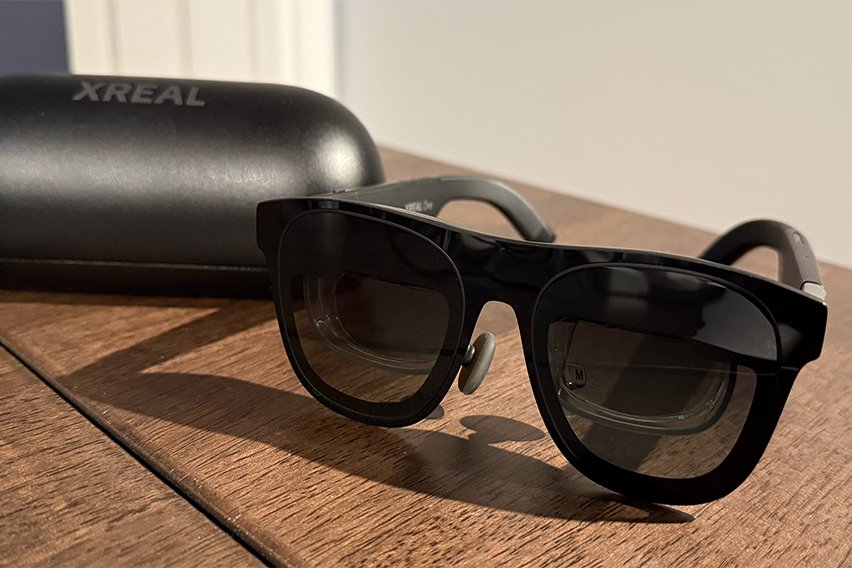Introduction
Augmented reality (AR) is no longer a futuristic concept limited to games or science fiction movies – it is rapidly becoming a part of everyday technology. Xreal (formerly Nreal) is one of the leading companies in the AR glasses market and is at the forefront of this change. With its presence in the US, Xreal is transforming the way people work, play, and interact with digital spaces.
The brand focuses on lightweight, wearable AR glasses that offer an immersive viewing experience while remaining practical for everyday use. Instead of bulky headsets, Xreal focuses on stylish, portable, and easily accessible devices that blur the line between the physical and digital worlds. Whether you’re streaming movies on a virtual giant screen, gaming, or increasing your productivity with multiple virtual displays, Xreal products promise a taste of the future.
Brand Mission
Xreal’s mission is to redefine the way people experience digital content. Unlike traditional technology companies that focus exclusively on hardware specifications, Xreal focuses on combining design, comfort, and cutting-edge AR technology to make augmented reality accessible. Their goal is to bring AR beyond niche markets into everyday life—transforming entertainment, gaming, and work productivity into seamless digital-physical experiences.
The brand also focuses on mobility. Instead of relying on heavy VR headsets, Xreal glasses are designed to look and feel like sunglasses, ensuring AR is wearable, stylish, and socially acceptable. In short, Xreal wants to bring AR into the mainstream.
The Xreal Air 2 is the brand’s flagship AR glasses and is designed for comfort and long-term use. It offers a full HD viewing experience with micro-OLED displays, creating the equivalent of a giant virtual screen floating in front of your eyes. The lightweight and slim Air 2 headsets weigh significantly less than traditional VR headsets, making them ideal for on-the-go use and longer sessions. They’re great for streaming Netflix, playing games on portable consoles, or even as a secondary display for work.
The Pro model is an improved version of the Air 2 and features electrochromic dimming. This allows users to adjust the tint of the lenses for greater immersion in different lighting conditions. This feature makes the model more versatile for indoor and outdoor use. It’s aimed at those who want more control and immersion without sacrificing comfort.
The Beam is a pocket-sized device that complements the Xreal headset, enabling wireless casting and additional features. It acts as a bridge, allowing users to connect smartphones, game consoles, or PCs more flexibly. Thanks to its integrated processing power, it ensures smooth performance and supports features like Spatial Display Mode, which projects multiple virtual screens to increase productivity.
Highlights
Leading AR glasses brand with a focus on comfort, mobility, and sleek design.
Products include the Air 2, Air 2 Pro, the Beam companion device, and the Nebula app ecosystem.
Designed for entertainment (movies, gaming) and productivity (virtual desktops, multitasking).
Lightweight compared to bulky VR headsets.
Innovative features such as electrochromic dimming and spatial display mode.
Accessories available for increased comfort and usability.
Pros and Cons
Pros
Lightweight and sleek compared to VR headsets; immersive large-screen experience; strong ecosystem with the Nebula app; diverse use cases (entertainment, gaming, productivity); Beam offers wireless flexibility; more affordable than high-end VR/AR competitors
Cons
Limited to AR rather than full VR immersion; optimal use depends on compatible devices; apps and ecosystem are still growing. Not ideal for high-performance gaming; glasses wearers may require additional glasses.
Customer Reviews
Positive Feedback
In the US market, Xreal products are consistently praised for their portability and comfort. Customers appreciate being able to watch movies on a giant virtual screen without having to lug around heavy headsets. The Air 2 headset is often cited as a “game-changer for frequent travelers,” providing a cinema-like experience on airplanes or in small spaces.
Gamers also enjoy the immersive experience, especially when paired with consoles like the Nintendo Switch or Steam Deck. The Beam headset is often cited as essential for unlocking the headset’s full potential.
Constructive Feedback
Some reviewers note that while Xreal offers excellent immersion, it is not a replacement for VR headsets. The focus is more on entertainment and light productivity than interactive VR gaming. Others point out that the glasses are heavily dependent on compatible devices, so not all smartphones or laptops offer the same seamless performance. Some customers also point out that the Nebula app, while innovative, is still under development and could benefit from enhanced features.
FAQs
What is the difference between the Xreal Air 2 and Air 2 Pro?
The Pro version has electrochromic dimming for adjustable lens tint, making it more adaptable to different lighting conditions.
Can the Xreal glasses replace my computer monitor?
Yes, many users use them as a portable secondary monitor via Nebula’s spatial display mode, but they may not completely replace a large desktop monitor for all professional use cases.
Are the Xreal glasses compatible with iPhones?
Compatibility varies. iPhones may require adapters, while Android devices often support direct connections. The Beam device helps bridge compatibility gaps.
Are they good for gaming?
Yes, especially for console and PC gaming. However, they don’t offer VR interactivity—think of them more as a giant immersive screen than a VR headset.
Do I need the Beam device?
Not necessarily, but the Beam offers wireless flexibility and features like multi-screen mode that enhance the overall experience.
Final Verdict
Xreal US represents one of the most exciting advances in consumer-friendly AR. With products like the Air 2 and Air 2 Pro, the brand offers slim, lightweight headsets that allow users to take their personal cinema or multi-screen workspace anywhere. The Beam companion device and Nebula app further expand the possibilities, making Xreal a versatile ecosystem for entertainment and productivity.
While the Beam doesn’t fully compete with immersive VR headsets, that’s not its goal. Xreal’s strength lies in practical AR for everyday use—for streaming series on the plane, playing games on the go, or increasing work efficiency with additional virtual screens. The headset’s low price compared to high-end competitors makes it accessible, while its design ensures it’s neither intimidating nor bulky.
For anyone in the US who wants to experience AR without having to venture into heavy VR equipment, Xreal is one of the best entry points on the market. It’s not just futuristic technology—it’s wearable, useful, and stylish.




